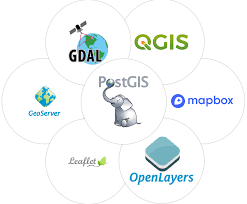In today’s digital world, web-based mapping is essential for presenting and exploring geographic information. OpenLayers stands out as one of the most widely used tools for creating interactive, scalable, and flexible web maps. As a free, open-source JavaScript library, it empowers developers and GIS professionals to build maps that run smoothly in any modern browser—no plugins required.
One reason OpenLayers is so popular is its balance of power and simplicity. It supports a wide variety of spatial data formats, such as GeoJSON, KML, and raster tiles from WMS. This makes it easy to combine public, open, or private datasets into a unified map. Whether you’re visualizing city infrastructure or environmental changes, OpenLayers gives you full control over how your data looks and works.
Just as importantly, OpenLayers has a strong global community. It offers regular updates, detailed documentation, and many real-world examples to guide your learning. At Geo-ICT, we believe learning OpenLayers opens new possibilities for sharing and interacting with spatial data directly in the browser.
What will you learn
This course teaches you how to build interactive maps from the ground up using OpenLayers. You’ll begin with the basics—loading and displaying raster and vector layers from sources like TileWMS and GeoJSON.
Next, you’ll customize your map’s appearance and behavior. For example, you’ll style features based on their properties, configure interactivity, and work with different map projections. You’ll also integrate OpenStreetMap and overlay it with your own data to create rich, informative visuals.
To go further, you’ll write style functions that change how features appear based on attributes. For instance, you can show traffic volume using thicker lines or adjust colors to reflect population density.
User interaction is a key focus as well. You’ll create maps that respond to user actions—like mouse clicks, zooming, or data inputs. Pop-ups, tooltips, and custom controls will help you enhance the map experience. Plus, we’ll share performance tips to keep maps smooth, even with large datasets.
By the end of the course, you’ll understand how OpenLayers works and how to use it confidently. You’ll be ready to build your own webGIS tools for internal use, public websites, or client applications.
Why choose this course
The OpenLayers course from Geo-ICT is designed for professionals who want to work with modern, open-source mapping technologies. Whether you’re a developer, GIS specialist, or data analyst, this course will give you the practical skills to build web maps that are functional, responsive, and visually compelling.
- Learn from instructors with real-world experience using OpenLayers in live projects
- Work with hands-on exercises and real data to build maps from start to finish
- Get post-course support for your projects, including optional custom training
- With a focus on practical application and supported by expert guidance, this course is ideal for anyone ready to take their web mapping skills to the next level.

